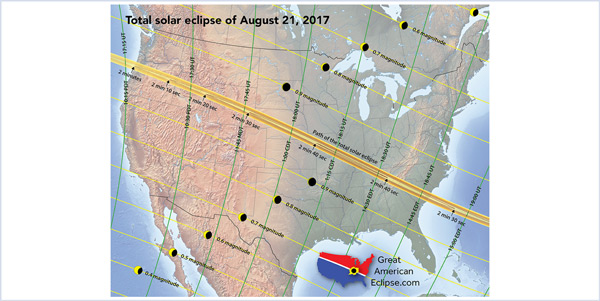By Tom Kleckner
Next week’s total solar eclipse will not disrupt SPP operations despite 100% obscuration levels in parts of its 14-state footprint, according to a report by RTO staff.
The eclipse will pass over North America on Monday, with parts of Nebraska, Kansas and Missouri experiencing totality — complete obscuration of the sun — for almost three minutes. Kansas City and Lincoln, Neb., are among the municipalities in the totality path. Other states in the SPP region will experience solar obscuration levels of 80% or more.
“The eclipse is expected to have some impact on resources and loads in our region,” said Lanny Nickell, SPP’s vice president of engineering.
The RTO expects to lose about 200 MW of solar PV generation during the height of the eclipse, assuming clear skies. The system currently has 215 MW of registered utility solar resources; SPP has identified another 111 MW of distributed PV on its system, including residential rooftop solar and commercial solar farms.
The eclipse will pass over the SPP footprint for about three hours, beginning at the western edge around 11:30 a.m. CT and ending at the eastern edge around 2:45 p.m.
Although solar generation will be reduced, the eclipse also will reduce air conditioning loads because of falling temperatures. But the temperature drop also will cut wind speeds, reducing wind generation, according to the report, which was prepared by a summer engineering intern. A drop in solar generation connected to the distribution system will appear as an increase in load from the transmission system’s perspective.
The report expects demand for lighting will increase during the eclipse, which would require additional generation.
“The eclipse is worthy of study in light of the increasing numbers of distributed generators in the SPP footprint,” the report said.
That study could come in handy in 2024, when another solar eclipse will cover Texas and Arkansas on its way to the Northeast. The National Renewable Energy Laboratory (NREL) projects the SPP region may have up to 1.1 GW of distributed PV in at that time.
Utility-scale solar is also likely to increase, given more than 7 GW of solar generation is being studied in the generator interconnection queue.





